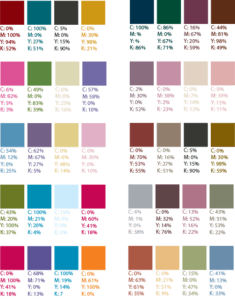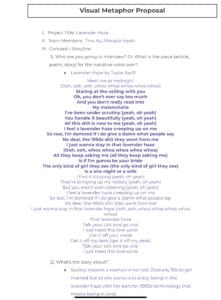
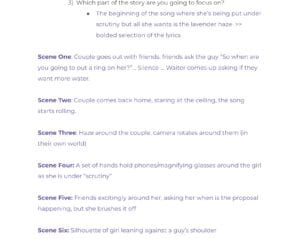
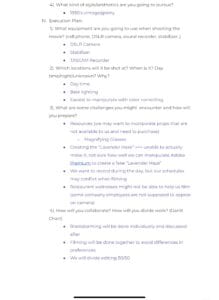
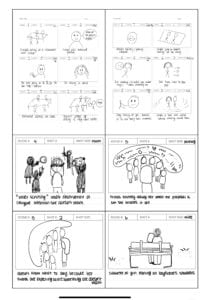
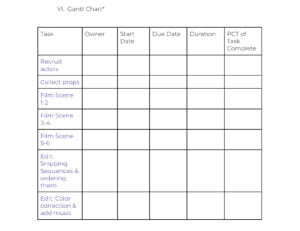
Communications Lab
Reverse Storyboard
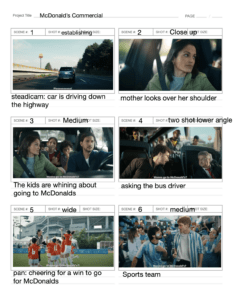
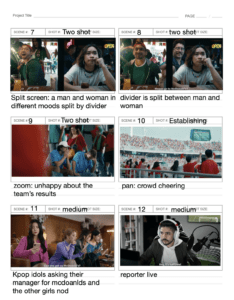
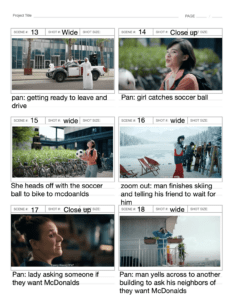
Link of Commercial: https://www.youtube.com/watch?v=w9x1xIhfDpc
Memory Soundspace
My Memory Soundscape is derived from my memory of Chinese New Year. It’s a way for me to reminisce a nostalgic memory. I lived in China until I was 4, but after that, I lived in the US my whole life. Some part of me is always going to miss the traditional ways of celebration in China. Its authenticity can’t be replicated because it’s the people, food, and traditional values that make it special. At first it’s raining outside, but it’s the type of rainstorm that is calming. My grandma goes to close the windows and curtains and then proceeds to prepare food for New Year’s Night.Whilst everything is going on, I hear the sound of the TV which usually plays 春晚. It’s the channel every Chinese family turns on that day. Later, we are all eating, laughing, celebrating the new beginning with a cheer. The background fills again with sounds of firecrackers and traditional instruments.
Because this memory is so old, I wanted my audio to kind of resemble how we remember things. At first, there are small distinct noises, but towards the end, the details begin to fall together creating a fuller image of the memory. Additionally, the memory consists of two separate moments: one of my grandma cooking, and one of the family gathering. There is a pause between the transition of the two because those moments are the ones I value and remember the most.
Process:
For this project, I first outlined a story line for the soundtrack. This was the basic outline of what I had before, but because of limited resources, I minimized to the soundtrack I have now.
- Door opens
- Greetings
- Some music/television in the background, soft sound
- Plastic bags shuffling (taking out groceries)
- Wash food
- Slice lettuce
- Thunk in sink
- Frying in pan
- Water boiling
- Plates and utensils clinking
- Gradually hears more people chatting and the music
- Cheers!
- Glass clink
- Fireworks
- Laughing
I started the soundtrack by building the background noises. The gradual increase in the rain’s pitter-patter begins the memory. Its presence is soft and welcoming. The footsteps are introduced to indicate someone is there now and that the following actions are from them. I tried to follow somewhat of a cooking procedure such as washing hands, finding pot and pans, and chopping food. Later, this event dissipates and transitions to people laughing and cheering. I used the echo effect to show it was in the past but something that fills up the room if I hear it again. I had glasses clinging to show toasting. Firecrackers and the TV played almost all throughout the soundtrack. They’re sounds that will always be present even if you don’t pay attention to them. I didn’t want my soundtrack to be so clear since New Year’s celebration should be loud and chaotic. Even after the family gathering, we resume to focusing on the rain and TV. I wanted to use this type of focus in and out of sounds as that gives it a feel that you are remembering something. Even in the present, we don’t always focus on the main subject all the time. We pay attention to our surroundings such as the sound of the cars on the road or the AC blowing from the ceiling. The window and curtain is closed again to symbolize the memory has ended, yet if you restart the recording again, it seems like the memory can be played over and over like a loop.
My memory is nostalgic and happy which is in contrast to one that’s traumatic, I wasn’t sure which types of effects to use. To convey a scary scene, you can use a high pitched screech or increasing loud thumps. The sequential aspect of my project made it easier to know which sounds should come first, but sometimes I faced a problem where I would have empty spaces because the actions are singular, coming one at a time. With this, I had to repeat a sound that made sense to add between one another.
During class discussion, I had some great feedback. For more improvement, I should try adding more sounds directly in front of my to create contrast of foreground and background. Otherwise, it seems like the soundtrack is everything happening around me. Although I did intend to do this because it’s me observing the world around me, it would still be cool to add those first perspective tracks. Also at the end, there was also too much going on. I can reduce the sounds and isolate them to one such as the rain to close off the memory soundtrack. If I could improve this project and had more time to work on it, I would record all the audios again paying more attention to the background noise. I want it reduced as much as possible because even if I reduce it with Audition, sometimes it’s not gone completely. After clipping the audios together, I can tell a clearer differentiation between the left and right microphones, so I might also want to utilize that detail in my soundtrack as well.
The Uncertainty of Documentarism
Steyerl talks about how the “unbroken belief” of the documentary form is challenged. How are Steyerl’s ideas about truth and fiction represented and expressed in Abbas Kiarostami’s film? How might fiction inform the truth?
Sometimes the truth can be told more easily by utilizing fiction documentation. The fiction imagery may better describe reality. Fiction is used as a tool to highlight the underlying truths of reality because sometimes they are hidden or difficult to depict just by seeing the surface level of things.
What is the significance of the authenticity and representation of the truth in the media that you consume on a daily basis? What is the role of a live broadcast?
The authenticity and representation of the truth in the media that we consume on a daily basis are significant as vague documentary brings abstract concepts and leaves room for interpretation. This may not always be a good thing as it can manipulate how you conceive information. The news used to be straightforward and give the hard facts, but nowadays they seem to be more up to interpretation and evoking emotions.
Diptych Blog Post
Stress
Tina Xu
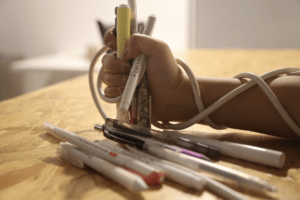
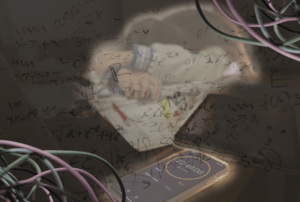
The overall concept for my Diptych is academic pressure on college students. I want to create a photo that depicts the heavy stress students have every day. Not only is college academically tough, but there are also high expectations from friends and family as well. Everyone wants to be successful, but when there seems to be never-ending homework, exams, and projects, it’s difficult to always be motivated. Over time, overworking turns into burning out. The once intriguing idea of learning now becomes dull and lifeless. It is merely a task, a to-do list checklist. We, as students, want good grades, social life, and to pursue a career we love. This unrealistic perfection is what causes many students to deviate from their true selves. To be simply put, school is stressful. Sometimes assignments are due, so we sleep late. We’re constantly running our lives through the 11:59 deadline. When does it end? After graduation?
The images contrast as the top one shows the point of view from others, while the bottom image shows the point of view from the individual. Visually, the colors are contrasting too as there is night and dark. I hope for other to see the heaviness and tension in the second image. It may seem pretty and simple from the outside point of view, yet we are still trying to hold it together. The wire represents the expectations that’s bounding us to expectations. Even with their obligations, we still try to hold on as tight as possible to those achievements. Nonetheless, some things still slip away from us. The second image shows the complexity of school life and the ever-chasing 11:59 deadline. The wires in the second image show the personal endeavors of the individuals, but as academics take out, they start to dull and fade away.
Image 1: I had a light shine from the back of my hand to show a spotlight effect and put on an exaggeration. I also used the classroom wire to tie around my hands.
Image 2: I used a semi-transparent background and overlapped it to create a messy background. Overall the image is dark, but then I cropped myself and the phone to focus on the subject. I also added the wires and changed the hues to show dullness. As the phone has a glow, I also added a light in the back to show a glow effect as well.
If I were to add improvements for this project, I would work on taking more clear photos. I think I should have experimented more with the lighting and features on the camera. I would also like to play around with Photoshop more as many of the features are still foreign to me.
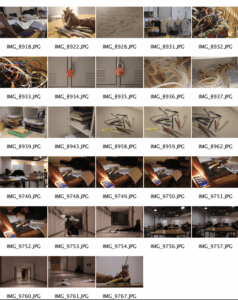
Contact Sheet
“In Our Own Image” by Fred Ritchin
Ritchin arranges this piece of writing to discuss the transition of photography from the past, to the present, and the possible future. With the “fluidity of the digital”, Ritchin meant that because photography and technology are so advanced now, there is a new meaning to photography. With the help of manipulation and editing in new software, there is now a fluidity with how photos can be crafted. Not only does it exist on physical paper films, but it exists on the internet too. We can see this on social media, magazines, and billboards. There are also many types of photography such as journalistic and underwater photography. If we take social media, for example, the interpretation that viewers take away can be so different. Essentially, there is an algorithm in most social media apps that through a time of analyzing which types of content you like, they will curate a media personalized to you. The issue with this is that sometime the content will be so focused on one topic that it becomes biased. There, it’s possible that you have a different perspective on one subject compared to other people. Publishers are also able to manipulate images as they like such as in photoshop and then post them on social media. This fluctuation of perception is one reason for the “fluidity of the digital”.
Photography captures the world in a single moment. Thus, I don’t think it’s capable of capturing reality. The single snapshot could be so different once it’s played out like in videos. A moment frozen in time could be out of coincidence or a bad picture. A lot of times when the whole story is told and acted out, the meaning behind it and its purpose will then be clearly shown. That is why I wouldn’t trust an image to depict the reality of the world even though photographs are able to hold deep meanings.
Diptych Concept
The overall concept for my Diptych is academic pressure on college students. I want to create a photo that depicts the heaviness of stress students have to carry every day. Not only is college academically tough, but there are also high expectations as well from friends and family. Everyone wants to be successful, but when there seems to be never-ending homework, exams, and projects, it’s difficult to always be so motivated. Over time, overworking turns into burning out. The once intriguing idea of learning now becomes dull and lifeless. It is merely a task, a to-do list checklist. We, as students, want good grades, social life, and to pursue a career we love. This unrealistic perfection is what causes many students to deviate from their true selves. To be simply put, school is stressful. Sometimes assignments are due, so we sleep late. We’re constantly running our lives through the 11:59 deadline. When does it end? After graduation?
I would like one image to show how it might look like from the outside, and the second picture to show all the baggage we carry mentally.
I want to create photos that consist of tension and contrast in color in a way that you can feel the pressure too. I plan to take photos of textbooks and stationery supplies. I would specifically like this to be in a classroom setting, but it is vague enough to not be related to NYU. With photoshop, I want to show the heaviness and pressure of it all. The school work, the expectation, the struggle, and future endeavors.
Sound Visualization Project
Best Lover By 88rising & BIBI: https://open.spotify.com/track/0iWFz0Q5Qha9bx325ocFWq?si=2f36bdd1131146f0
The song that inspired my Sound Visualization Project was Best Lover by 88rising and BIBI. I chose this song as it instantly brightens my mood every time I listen to it. Aside from the lyrics, the music was smooth, bouncy, and light with ripple/echo effects. With noise-cancellation headphones, it’s like you’re in space where sounds loop around you which is why I embedded of what looks to be galaxy esque loops. Although my design may seem a little disorganized, the way the music was composed is also random as it introduces new sounds and rhythms to every other beat. Most of the backtracking alongside the artist produced soft sounds, therefore I steered away from hard jagged shapes. Most of the designed used were falling off the page as I wanted to reinforce the idea of a spatial dimension as it cannot all fit into one page.
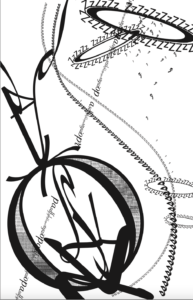 Gestalt Principles Used
Gestalt Principles Used
Bottom left circle
-
- law of similarity and proximity
- repeated same letters and overlapping to create gradient effect and unison
Circle of Z’s
-
- Law of Pragnanz and closure
- Z rings are only attached to one part of ribbon-like structure
String of letters across the board
-
- law of continuity and closure
- line is meant to fall through the big ring on the bottom
Creating the one black square design taught me to keep things simplified as we had a scarcity of paper in that project.
Personally, this project had some difficulty. Thus, there were failures and successes. The failure was keeping the draft as the final draft. Although I had the big picture in mind, I stuck with the designs I had already inputed into Adobe. As a result, my first attempt at the visualization was much more chaotic and random. In general, I felt a little lost working on this project, but after an office hour with Professor Zhang, I did more brainstorming and came up with this final design. It was suggested that I be careful with the fluidity of the whole piece and repetition of designs. I think it’s better now that my design is more minimal to convey a cleaner message to the viewers. The comfortability ties into how I feel about the song.
If I were to do this project again, I would like to add more to the background and fill in empty spaces. I would also like to explore more of the tools Adobe Illustrator has to offer as this was my first time working with it. I’m sure there are many cool features that can elevate my work.
Pioneer Plague: Tina Xu & Makayla Hsieh
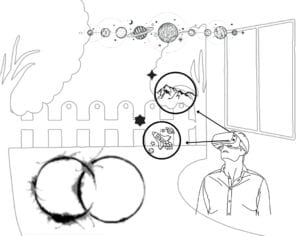
We would like to introduce a piece of technology from Earth called virtual reality goggles. They allow us to see a realistic visual field without being physically present. Once you have the goggles on, it feels like you are living in a different dimension. It allows you to experience all types of scenery which is why we are recommending this technology. As Heptopods are discovering more about human life and Earth, it will give them an insight into how humans perceive the world and close to a first-hand perspective on Earth as transportation between the two worlds may be difficult. These VR goggles provide audio as well. There are different sounds from different planets and galaxies which are affected by their respective atmospheres such as pressure, gravity, and other factors.
Heptapods can bounce back and forth between the future and the present. VR goggles are similar in a way that what it is showing is timeless. The virtual dimensions do not have a time that Heptapods do not perceive anyways. We thought this would be a perfect technology to introduce to Heptapods, so we created this pioneer plaque to convey our message.
As seen from our pioneer plague, there is a man wearing VR goggles outside of a building with a fence and two trees. This is his current setting. If you look closely at the VR goggles, you can see two special star-like buttons, these are the different modes on the goggles so that one may choose where he wants to be. With a click of either button, the VR goggles will bring this man to new sceneries. We represented this concept via arrows and the same star-like buttons. As shown in our diagram, the top button will take the viewer into the wonders of nature in a mountain whereas the second button will take the viewer to explore the unknown world of outer space. Now in this reality, he feels one place but sees and hears another. On the left-hand side, we have embedded Heptapods’ semasiographic language that specifically translates to “learn” and “human”, in hopes of the Heptapods to understand our message that this is a human technology that we want them to learn more about. Lastly on the top, we showed the planets in alignment to convey how easy it is to experience planets just from where you are. We hope that this is a comprehensive piece the Heptapods will understand.
10 Color Schemes
